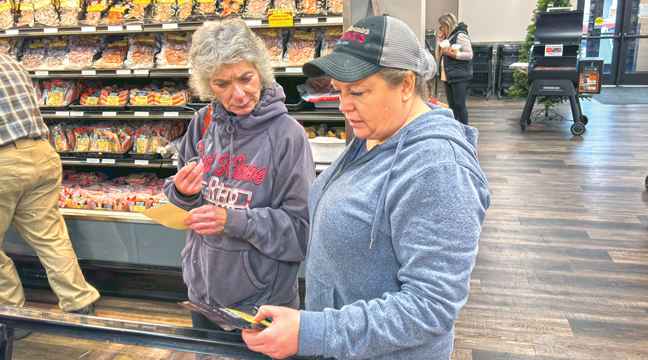Even heavy rain, thunder and lightning last Thursday couldn’t dampen the spirits of about 30 kids who volunteered to help save the Monarch butterfly and honey bees.
On a rainy morning at the First Lake Xcel substation in Monticello, about 50 people attended a special pollinator planting event on the seven-acre site.
With native plants supplied by Minnesota Native Landscapes and instructions by Bre Bauerly of that same company, the kids went about planting more than 200 plants of different varieties that will serve as habitat for the Monarch butterfly, honey bees and other pollinators.
While everyone waited for the rain to subside a bit, Jim Eckberg, plant ecologist with the Xerxes Society, spoke a little about the importance of pollinators.
“Many of the crops we eat need a pollinator in order for them to grow,” said Eckberg. “One in three fruits and vegetables need to be pollinated by an insect.”
Eckberg said natural ecosystems need pollinators to survive, but they’re in significant decline.
“The Monarch butterfly has experienced an 80% to 90% decline,” he said. “We’ve lost so much of their habitat, so planting these habitats and getting them back on our land is the best way we can protect butterflies and bees.”
Eckberg said bees eat pollen, and there are 400 wild bee species in Minnesota that depend on pollen to survive.
“There’s no substitute for native wildflowers,” he said.
Alex Krohn, an employee at the Monticello Nuclear Power plant and also a beekeeper, said she would be placing beehives on the site to help the bees. She showed the kids how beehives work and explained why they are important.
There were also a number of local representatives at the event.
Monticello Mayor Brian Stumpf said it’s always nice to have development, but preserving natural habitat is just as important.
“These seven acres of land designated as pollinator-friendly habitat are a beautiful balance to the substation,” he said. “This makes a critical contribution to the future of the Monarch butterfly, bees and other pollinators.”
County commissioner Pat Sawatzke said it’s a way to use land wisely to save pollinators.
“I can remember when I was a kid, it wasn’t uncommon to see hundreds of Monarch butterflies flying all over the place. It was a sign of summer,” he said. “Now I can go days without seeing a Monarch butterfly. So this concept of providing habitat is long overdue.”
Laura McCarten, regional vice president for Xcel, said Xcel has 350 substations in Minnesota North Dakota and South Dakota and planting a pollinator-friendly habitat is a great example of Xcel’s commitment to be responsible by nature.
“It’s something that we at Xcel Energy strive to do every day,” she said. “It’s an opportunity for Xcel as a utility company to show leadership in the Midwest and also to show an example for other utilities across the nation. It just makes sense.”
Randy Fordyce, senior media relations representative for Xcel, said the Monarch butterfly migration route runs along the I-35 corridor from Canada to the Gulf of Mexico.
“We did this at the St. Croix River Valley facility and we’re planning on doing this more and more at various substations,” he said. “Now MnDOT is starting to do plantings along I-35 and encouraging companies and businesses to do the same thing.”







